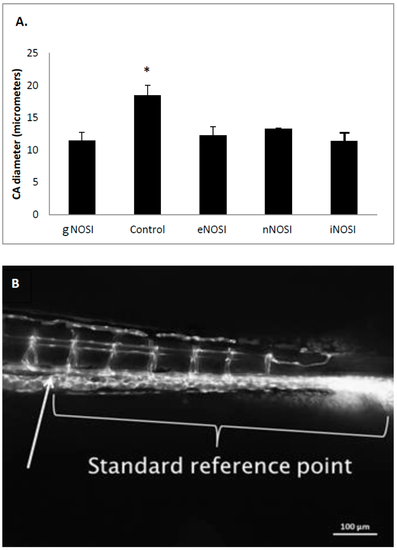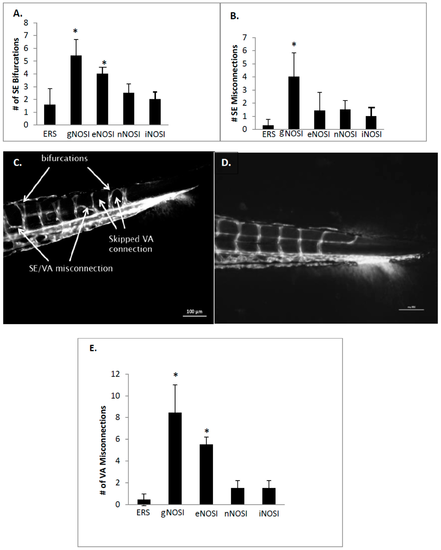- Title
-
The Relationship between Estrogen and Nitric Oxide in the Prevention of Cardiac and Vascular Anomalies in the Developing Zebrafish (Danio Rerio)
- Authors
- Sykes, B.G., Van Steyn, P.M., Vignali, J.D., Winalski, J., Lozier, J., Bell, W.E., Turner, J.E.
- Source
- Full text @ Brain Sci

ZFIN is incorporating published figure images and captions as part of an ongoing project. Figures from some publications have not yet been curated, or are not available for display because of copyright restrictions. PHENOTYPE:
|

ZFIN is incorporating published figure images and captions as part of an ongoing project. Figures from some publications have not yet been curated, or are not available for display because of copyright restrictions. PHENOTYPE:
|

ZFIN is incorporating published figure images and captions as part of an ongoing project. Figures from some publications have not yet been curated, or are not available for display because of copyright restrictions. PHENOTYPE:
|

ZFIN is incorporating published figure images and captions as part of an ongoing project. Figures from some publications have not yet been curated, or are not available for display because of copyright restrictions. |

ZFIN is incorporating published figure images and captions as part of an ongoing project. Figures from some publications have not yet been curated, or are not available for display because of copyright restrictions. PHENOTYPE:
|
|
The effects of various treatments in TG(fli1:EGFP) y1/+y1 (AB) transgenic fish on average tail caudal artery (CA) diameter as measured from confocal z-stack photomicrographs after 4 days of treatment beginning at 48 h post fertilization (hpf). (A) CA diameter is significantly decreased in gNOSI treated fish when compared to that of controls (* p < 0.001). In addition, all three NOSI isoforms also cause a significant decrease in CA diameter (p < 0.05; Bar = ± SD); (B) In order to ensure that measurements of all vessels including the CA were collected in the same location in every confocal- imaged photograph, a standard reference point (arrow) of a distance (875 µm) from the tail region was used. Bar equals 100 µm. PHENOTYPE:
|
|
The effects of various treatments in TG(fli1:EGFP) y1/+y1 (AB) transgenic fish on average tail blood vessel measurements calculated from confocal z-stack photomicrographs after 4 days of treatment beginning at 48 h post fertilization (hpf). (A) This figure indicates that the number of intersegmental vessel (SE) abnormal bifurcations increases significantly when treated with gNOSI (15 mM) or eNOSI (5 µM). Both treatments were significantly more effective than either nNOSI (50 µM) or iNOSI (10 µM) in causing this anomaly (* p < 0.001); (B) The number of SE misconnections increases significantly when treated with gNOSI compared to the control values (* p < 0.001). Also, gNOSI was significantly more effective than eNOSI, nNOSI, and iNOSI in causing this vessel anomaly (* p < 0.001); (C,D) Confocal z-stack imagery of the vasculature shows either retarded growth or deterioration, particularly in the dorsal longitudinal anastomotic vessel (DLAV) and vertebral artery (VA) vessels (arrows) in the various treated groups mentioned in A–B above which appear patchy or absent (arrows) when compared to control fish as seen in D; (E) Treatment effects on vertebral artery (VA) development demonstrates significant numbers of misconnections when treated with gNOSI and eNOSI compared to the control values (* p < 0.001). Also, note that both eNOSI and gNOSI were significantly more effective than nNOSI and iNOSI in perpetuating this vessel anomaly (* p < 0.001). Bars = ± SD. The data indicated in A, B, and D above was collected from the last 875 µM of the caudal area. PHENOTYPE:
|


